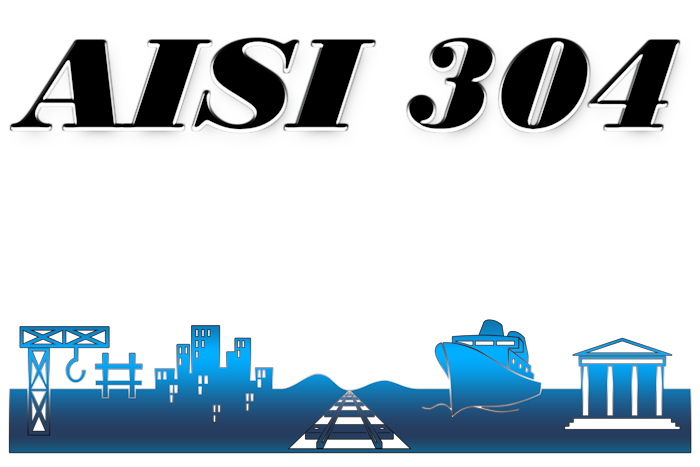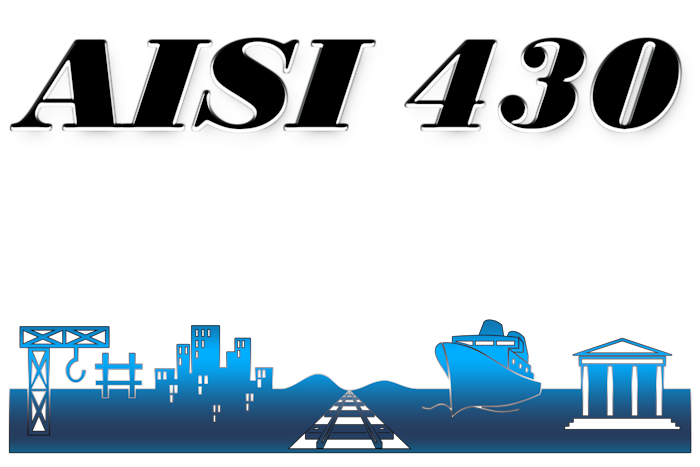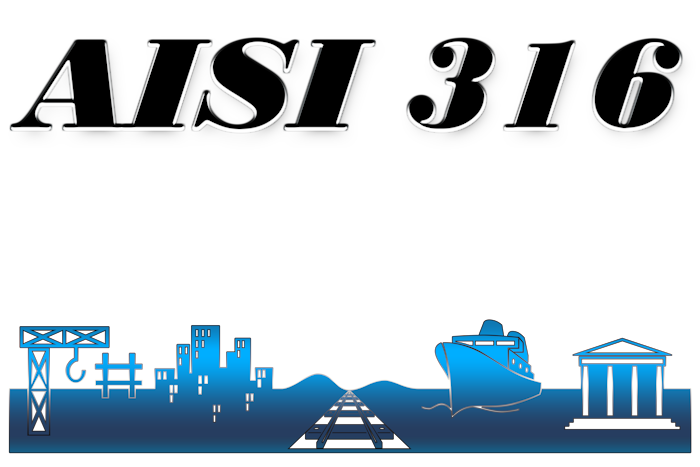Stainless Steel Grades Directory

The maintenance and mechanical properties of different types of stainless steel depend on its chemical composition. Therefore, before starting any actions with stainless rolled metal, you should choose the right grade of stainless steel. The right choice of steel grade is the key to your success in working with and operating a stainless product in the future.
- Details
- Written by: ukirs
- Hits: 2132

AISI 201 | EN 1.4372 | DIN X8CrMnNi18-8 - stainless steel, belonging to the family of austenitic stainless steels. It is characterized by high strength, plasticity and rigidity. It has very low thermal conductivity. Products made of this grade of stainless steel can be used in a fairly wide range of temperatures.
- Details
- Written by: ukirs
- Hits: 1340

AISI 304 | EN 1.4301 | DIN X5CrNi18-10 - This is a chromium-nickel austenitic steel. The presence of nickel in it in the amount of 8 - 10% leads to the fact that the austenitic phase is preserved at temperatures from low to 1050 ° C. The main advantage of this class of steel is its high service characteristics. It exhibits strength, plasticity, corrosion resistance in most working environments and has good processability.
- Details
- Written by: ukirs
- Hits: 1004

AISI 430 | EN 1.4016 | DIN X6Cr17 - is one of many stainless ferritic chromium corrosion-resistant steels that is most widely used. It belongs to the group of general-purpose stainless steels. It combines high strength and mechanical properties, high corrosion resistance, including atmospheric, excellent machinability, good plastic deformability, applicability to the processes of drawing, stamping, punching holes, etc.
- Details
- Written by: ukirs
- Hits: 675

AISI 316 | EN 1.4401 | DIN X5CrNiMo17-12-2 is an acid-resistant austenitic stainless steel that is suitable for use in aggressive environments: phosphoric, nitric, citric, lactic, formic, acetic acids, in the presence of alkalis - hydroxides and salts - nitrates, chlorides, fluorides, acetates and sulfates. This brand also shows excellent resistance to the marine environment and salts.
- Details
- Written by: ukirs
- Hits: 1061

AISI 420 | EN 1.4034 | DIN X46Cr13 - is a martensitic stainless steel which has good polishing and mechanical properties but poor weldability. Due to its high carbon content, this steel is very hard. It has good corrosion resistance in non-chloride environments and weak organic acids. Good resistance to water and steam. Not resistant to intergranular corrosion under as-welded or welded conditions.
- Details
- Written by: ukirs
- Hits: 764